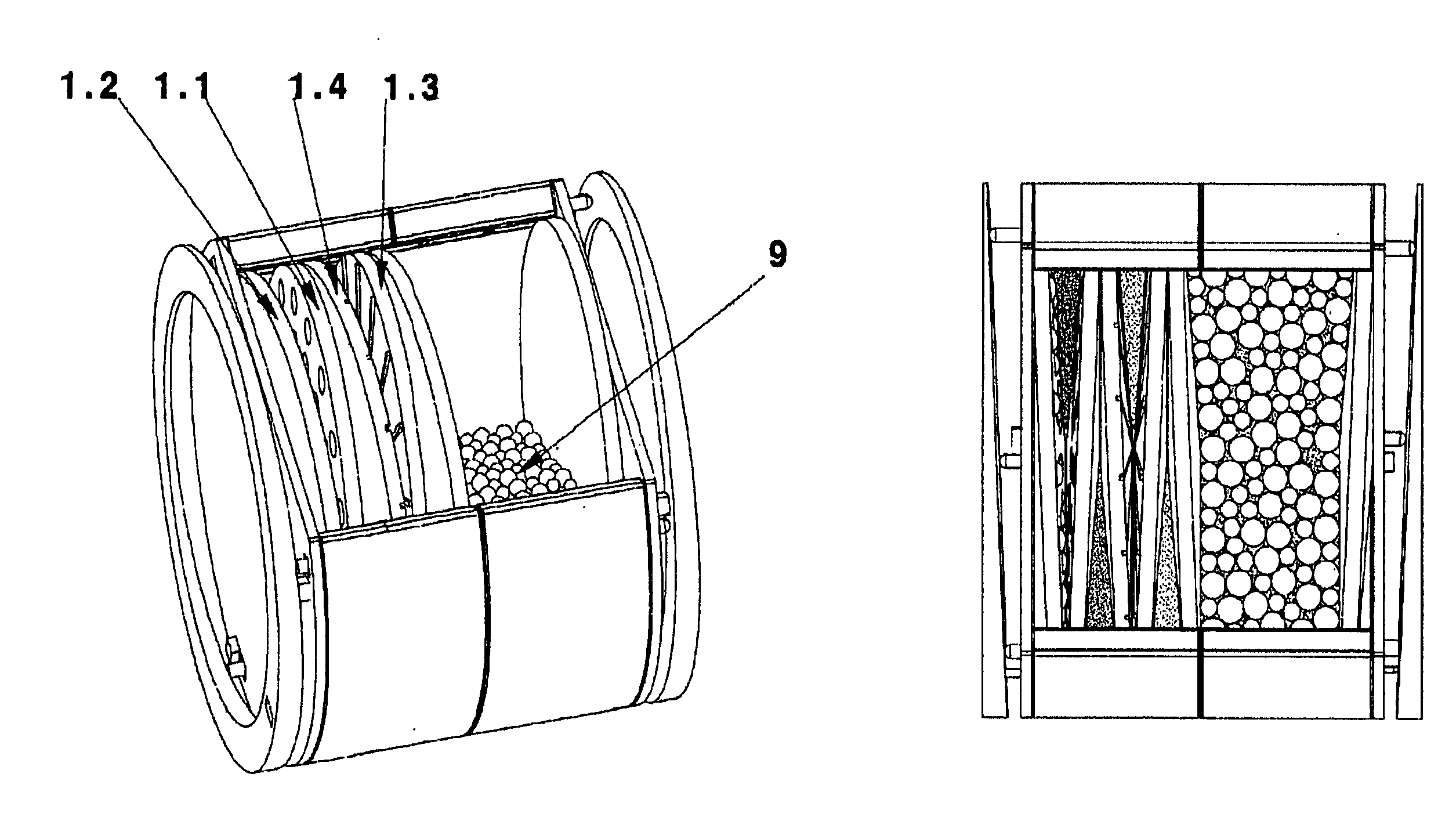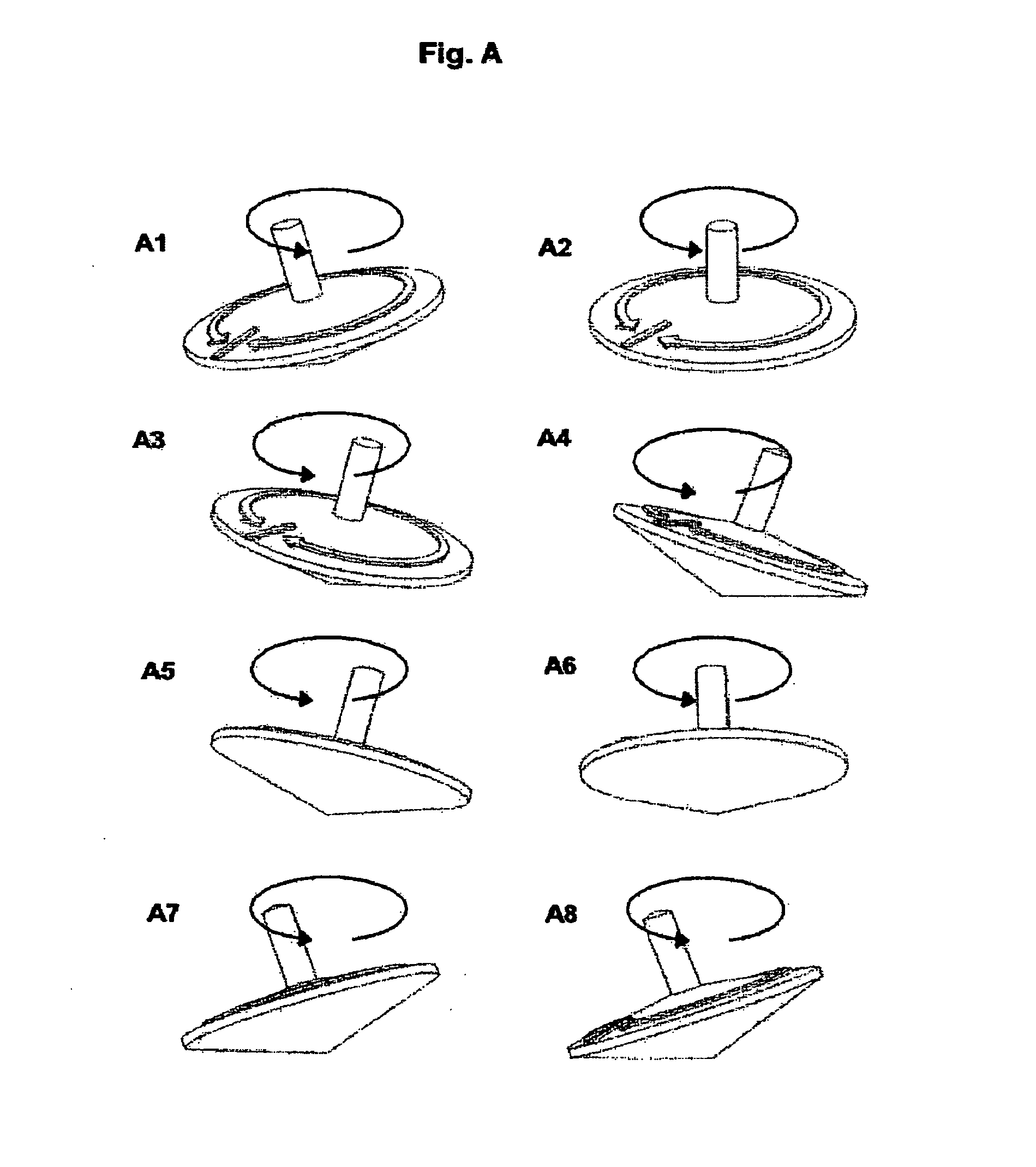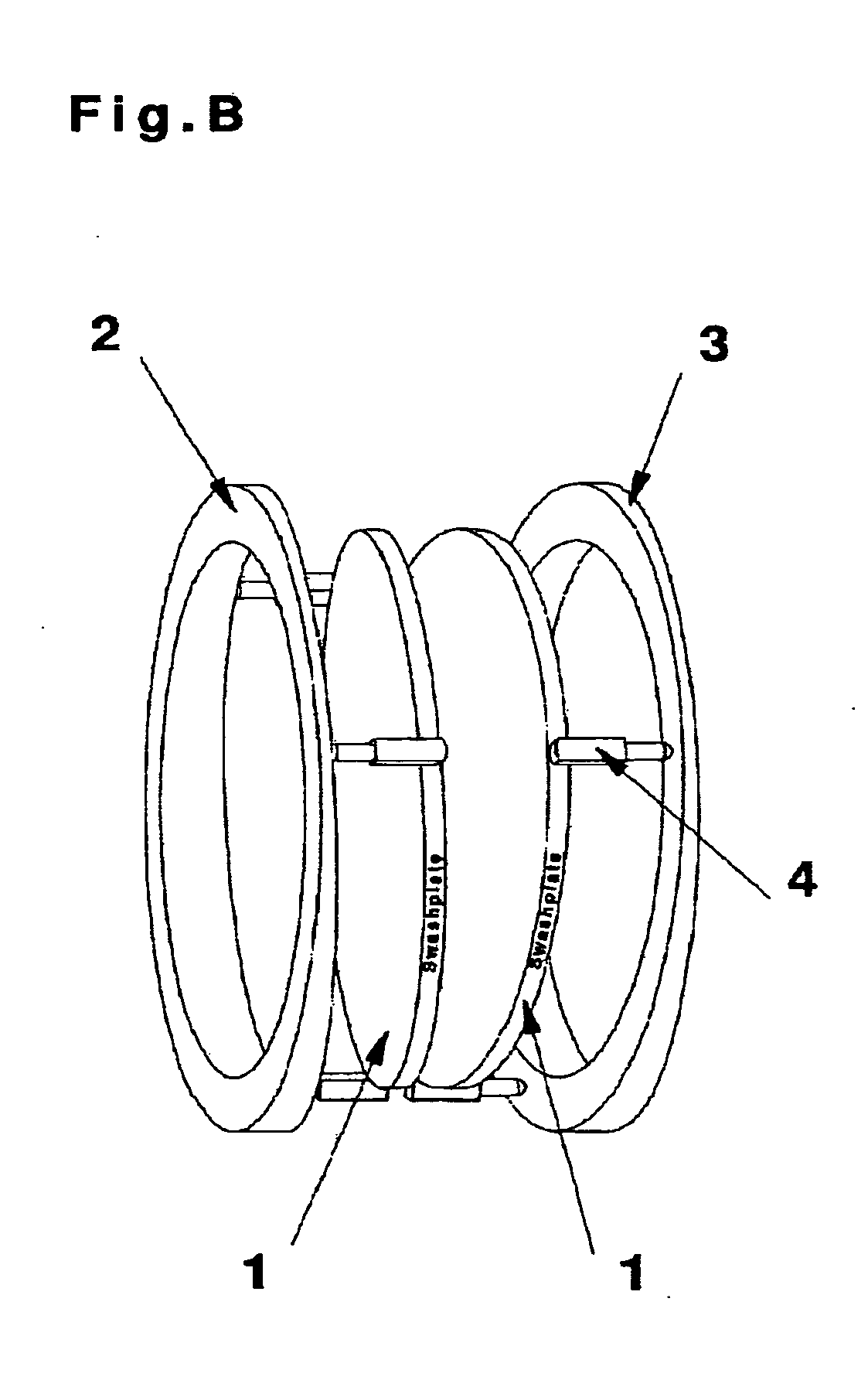Device and method for the continuous treatment of masses a
- Summary
- Abstract
- Description
- Claims
- Application Information
AI Technical Summary
Benefits of technology
Problems solved by technology
Method used
Image
Examples
Embodiment Construction
[0006]The invention is based on the object of increasing the energy input (mechanical and / or thermal) and the substance input (e.g. gassing) and also the substance removal (e.g. degassing) in a device and a method for processing milling material and masses in order to reach the final state of the milling material or the mass desired by the processing more rapidly than with the conventional prior-art means.
[0007]In order to solve this object, the invention provides a device for processing masses, in particular chocolate masses, in which at least one swashplate (1) provided with an obtuse-angled cone on its front side, is disposed so that the apex of the swashplate (1) lies on the axis of the swashplate and the lateral surface of the swashplate (1) can extend as far as its outside diameter, wherein the swashplate (1) is shaped and disposed with respect to a mating surface opposite its obtuse-angled cone such that a line of the swashplate (1) running from the apex over the lateral surf...
PUM
 Login to View More
Login to View More Abstract
Description
Claims
Application Information
 Login to View More
Login to View More - R&D
- Intellectual Property
- Life Sciences
- Materials
- Tech Scout
- Unparalleled Data Quality
- Higher Quality Content
- 60% Fewer Hallucinations
Browse by: Latest US Patents, China's latest patents, Technical Efficacy Thesaurus, Application Domain, Technology Topic, Popular Technical Reports.
© 2025 PatSnap. All rights reserved.Legal|Privacy policy|Modern Slavery Act Transparency Statement|Sitemap|About US| Contact US: help@patsnap.com



